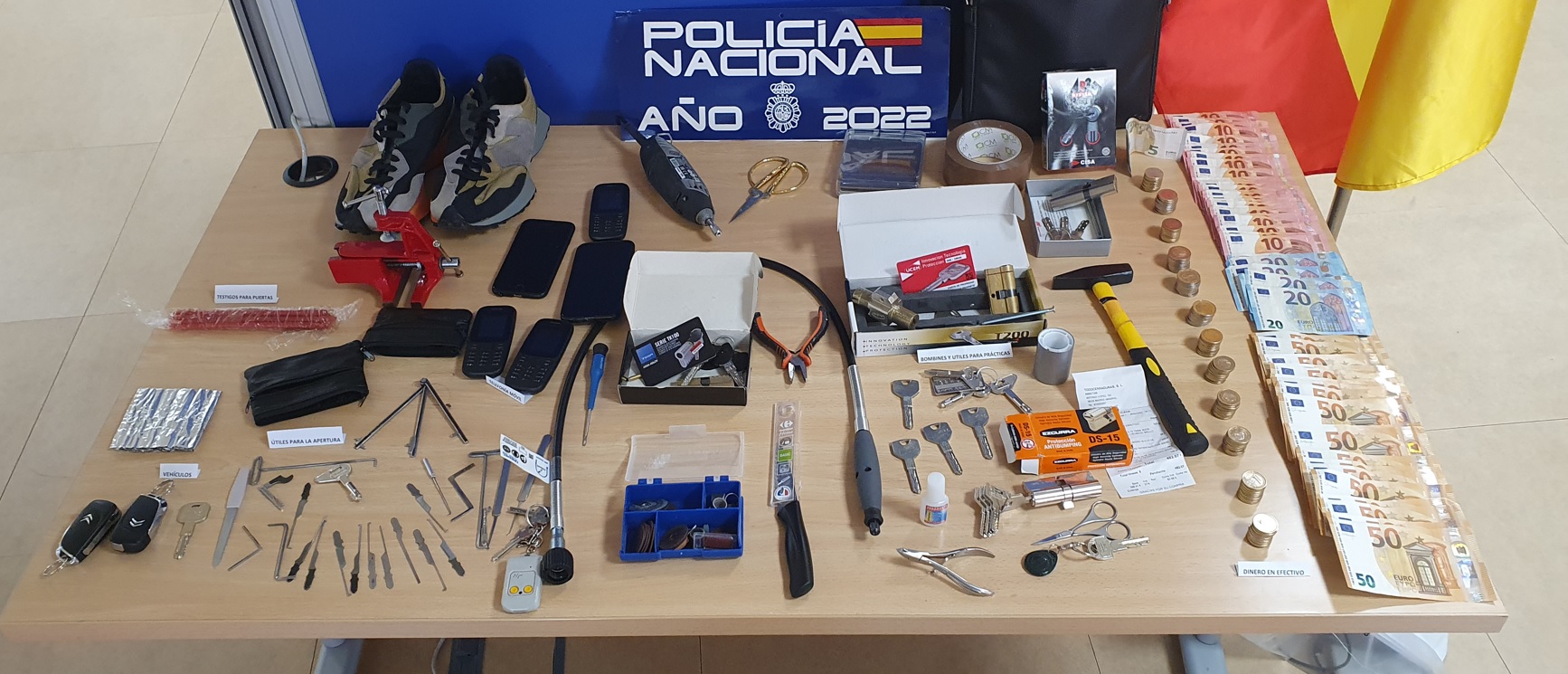Spanish National Police detain three members of a traveling group specialized in the commission of home robberies
They previously marked the doors of the houses with plastic tokens or glue to ensure that no one was found inside during the robbery.
To open the doors, they used techniques such as bumping – introduction of a key that is hit to make the pistons of the lock jump – or “picking”, the classic method used by locksmiths.
Numerous tools used to open doors were intervened in the registry – lockpicks, master keys, plastic witnesses or glue – as well as the clothes they wore for the commission of the robberies and cash stolen from the assaulted homes.

03/15/22
Agents of the National Police have arrested three people, of Georgian origin, members of a group specialized in the commission of home robberies.
To open the doors, they used techniques such as bumping – inserting a key that is hit to make the lock pistons jump – or “picking”, the classic method used by locksmiths. Thanks to these arrests, it has been possible to clarify six robberies committed in Madrid (3), Pontevedra (2) and Vigo (1).
The investigation began after the identification of two men, of Georgian origin, who were driving in a vehicle with French registration through the Usera district of Madrid, one of them being arrested for an alleged crime of document falsification by carrying a false Ukrainian driving license. . Subsequent inquiries led the agents to find out that they could be dedicating themselves to the commission of robberies with force in homes, and found that they had committed at least three robberies with force in homes in Galicia, two of them in Pontevedra and a third in Vigo.
During the course of the investigation, the agents determined his possible involvement in three other robberies committed in the city of Madrid during the month of February. All of this made the investigators suspect that the events were not isolated, but that they were related to each other and that they had been committed by a criminal group, of an itinerant nature, made up of at least three members, perfectly structured, with a clear division of chores.
They marked the doors with glue or plastic witnesses
As for the modus operandi used by those investigated, it consisted of carrying out a previous marking on the doors of the selected homes. In this way, they placed between the frame and the door an adhesive cord, practically imperceptible – glue type or similar – or transparent plastic or paper witnesses, which came off easily when the victims opened the door, and thus ensured that the houses they were empty at the time of the theft if the markers were still in place. After a few days they returned to the addresses indicated and one of the members called the intercom while others prowled around the interior of the property in order to detect the presence of the tenants approaching the door to see if they heard noises inside.
Likewise, both during the placement of the witnesses in the days before and on the day of the execution of the robbery, one of the members of the group carried out surveillance functions in the vicinity of the home that was going to be robbed, in order to notify the other members in the case of police presence, neighbors or the victims themselves.
Method “bumping” or “pick” to open the doors
Once they made sure that the house was empty, they opened the access doors using different tactics, based mainly on the manipulation of the locks, using specialized door opening techniques such as “bumping” -consisting of the introduction of a key that is struck to make the pistons of the lock jump and thus proceed to its opening- or the “pick”, the classic method used by locksmiths, these Georgian clans being true experts in the matter.
On the other hand, something common in all the robberies investigated is that once the loot was seized, the detainees closed the locks with turns when leaving, which demonstrates the high degree of specialization and knowledge of locksmithing. In most of the robberies committed by these people, no damage was observed in the locks, which made it difficult to detect the robberies until the residents arrived at the home. Likewise, in order to avoid leaving traces, they used socks or other clothing on their hands.
At the beginning of February, the investigators established an operation in which the three members of the group were arrested. Numerous tools were intervened in the search carried out, specific tools for opening doors such as lockpicks, master keys, plastic witnesses, glue and the clothing used in the commission of the robberies, in addition to mobile terminals with prepaid cards and stolen cash of homes raided.




